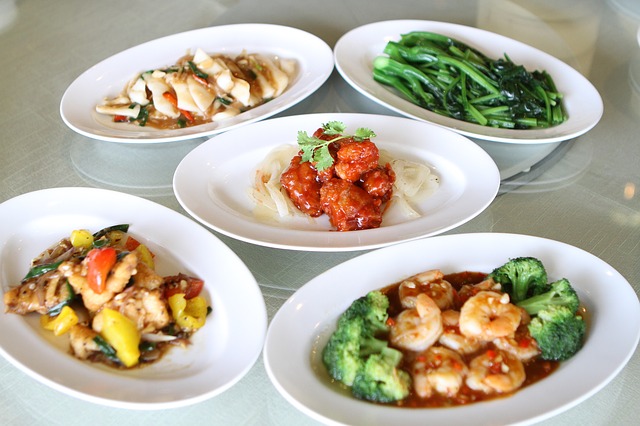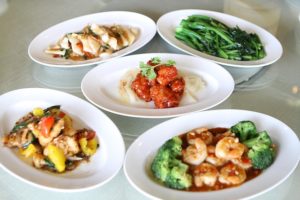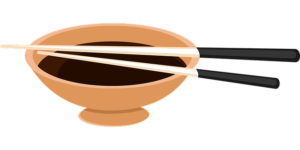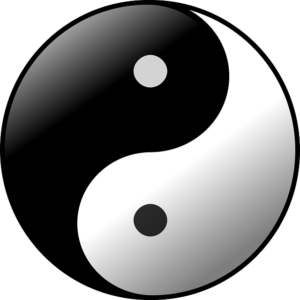
From time to time I am asked if there is a special diet for qigong. It’s a fair question. What we eat has plays a massive role in the quality of our energy, so it makes sense that along with exercises to work with your qi you would also be interested in what you should eat to maximize your energy.
The answer to this question is more nuanced than someone may initially expect. Often people are looking for a specific ‘diet’ that is the ‘right’ way to eat. But nutrition is a very complex subject, which is why there are so many different ‘diets’ and theories about nutrition out there. And, as with so many things, what ‘diet’ is right for you, depends greatly on your particular situation, where you live, and what your goals are.
So the very short answer is that there is no ‘qigong diet’. The longer answer is that there are principles from qigong that we can apply to our understanding of nutrition that will be valuable to us in making choices of what we should eat to obtain optimum health and vitality.

I am a little reluctant to address a topic without being able to truly do it justice, and I do have plans to make a course specifically on principles of nutrition relating to qigong at some point in the future, but that is likely to be quite some time away as I have several other courses to complete and books to write first – the next one being our upcoming Introduction to Qigong Healing course. So, in the meantime, while waiting for the opportunity to produce more in depth resources, this article will present in broad brushstrokes some of the basic principles underlying a qigong, or Chinese medicine approach to eating.
A qigong approach to eating

If you take a moment to think about the difference between regular exercise and qigong exercise, it will give you some good insights into some of the major differences between the common modern approach to nutrition and a qigong approach. Regular exercise usually focuses purely on the actions of the physical body, the contractions of the muscles, and often not even the muscles of the whole body but rather just one or a few at a time. Qigong exercise on the other hand considers not just the body, but the mind as well, and focuses on what occurs at the intersection between these two – the flow of energy through the whole body. In a similar way, common modern nutrition usually looks at individual nutrients in isolation, whereas in a qigong approach to food we will consider not just what we eat, but how we eat it. We will also focus not only on the gross nutrients within a food, but on the overall effect the food has on stimulating or changing the quality of the energy within our bodies.
In short, in a qigong approach to nutrition we will consider the subtle interplay of energy within the food on our system. Our focus will not just be on the nutrients within the food, but also on how the food stimulates our body to react and use the food. All the good nutrition in the world is of no use to you unless you are able to digest and absorb it! There are many qualities of food that go beyond their reductionist nutritional contents that play a significant role in our ability to digest, absorb, and make use of it.
A few key principles in a qigong diet
The principles that we will use in a qigong approach to eating will be the same as those we find throughout Chinese philosophy. Two of the most fundamental of these are the principles of Yin and Yang, and the Five Elements.
Five elements and food

We will look at the five elements briefly first.
The five elements in Chinese philosophy are Earth, Metal, Water, Wood, and Fire. Each of these have different organs, seasons, colors, flavors, and many other qualities associated with them. The table below shows the relationship between just a few of these qualities which are relevant to our discussion.
| Element | Organs | Flavor | Color |
| Earth | Stomach & Spleen | Sweet | Yellow |
| Metal | Lungs & Large Intestine | Acrid/spicy | White |
| Water | Kidneys & Bladder | Salty | Blue/Black |
| Wood | Liver &Gallbladder | Sour | Green |
| Fire | Heart & Small Intestine | Bitter | Red |
If you have some understanding of how the organs in your body work, you will be able to start to join together some of the dots of how all this fits together straight away when you look at this chart. If you understand a little Chinese medicine you will be able to link even more of those dots. You see, as with other aspects of qigong, it is not an arbitrary system. When we talk about different aspects of the energy, they are linked to real physical properties, just perhaps not the same properties we are used to focusing on when we look at things from other perspectives.
Foods that are yellow in color tend to be high in certain types of nutrients, foods that are green tend to be high in a different set of nutrients, and so on through all of the colors. Different flavors cause our body to react and be active in different ways. Think of the different reaction in your mouth in terms of salivation and the shape you make with it as you even contemplate eating different flavors, let alone actually ingesting them. These same different reactions continue down through all the organs involved in digestion, absorption, and utilization of the food.
So as a brief application of this information. If you want to make your liver more active, eat more sour food. If you want more activity in your heart and small intestine eat bitter foods. If you want a balance of activity it is good practice to have at least a little of each of the five flavors each time you eat. If you want a balance of nutrients, try to eat a balance of all the variety of colors.
Yin and yang food characteristics

Characteristics of food can also be classified according to yin and yang. This means characteristics such as whether the food warms you up or cools you down. Whether it moistens or dries your system. Or whether it draws energy to your internals or send the energy outwards through your body. This involves intrinsic properties of the food, and also how these are modified by how we prepare them.
A very basic application of this is that cooked foods tend to be more warming, and raw foods tend to be more cooling. So in winter it is healthy, and you will naturally be inclined, to eat more cooked food. Whereas in summer more raw foods are going to be helpful to counteract any excessive heat from the warm temperatures. A lot of this is instinctive, and why we are naturally drawn to things like soups and stews in winter, and salads and raw fruits in summer. Understanding the principles in more detail can help us to tap into our natural intuition even more strongly and apply these principles with more skill to maintain or return to balance when needed.
Harmony with your environment
As referenced above, different seasons affect what it is best for us to eat. Related to this, where we live is also relevant. What is good for you to eat on a tropical island is going to be quite different from what it is best to eat in northern Europe. Fortunately tropical fruits grow in abundance in the tropics, which matches the best diet for dealing with the heat of the environment.
We find that the best foods for thriving in a particular environment usually grow in that same environment. Not only does eating in harmony with our environment make things simpler and cheaper for us, it is also for the ecology, as it means that food does not need to be shipped long distances. It also means that we can eat foods that are familiar to us and where we are from. Sometimes people worry that to eat fully in harmony with Chinese philosophy, they are going to need to eat all sorts of Chinese foods that are strange to them and hard to find. This actually isn’t the best application of these principles. A more full embrace of the principles of qigong eating will mean that you apply them to the foods that are readily available in your own environment.
A spiritual aspect to your eating?

I mentioned earlier that a qigong approach to eating would also consider how we eat, and not just what we eat. There was an interesting study conducted some years ago where they had two groups of participants still down to eat a meal loaded with saturated fats, salt, sugar, and cholesterol. They had one group eat in an environment with load noise from construction and traffic. The other group ate with gentle music and sounds from nature. They measured indicators such as blood pressure and the level of triglycerides in the blood. In the group that ate with the stressful disturbing noises all the indicators went up. In the group that ate in the peaceful and pleasant environment they went down…
So there is more to the equation than just what we eat. How we interact with what we eat is also important. There are many aspects to this, but a simple one that you can apply immediately is whatever you have available to eat, whatever preconceptions you have about it being ‘healthy’ or ‘unhealthy’, always eat it with gratitude. When we eat with gratitude we are more likely to be receptive to the good within the food. We will gain more benefit from it, whatever it is.
Conclusion
I hope you have enjoyed this brief introduction to the ‘Qigong Diet’, or more specifically qigong principles that can be applied to what and how we eat. It is a rich subject, filled with fascinating insights, and a lot of common sense that will make you say “aha” when you put the pieces together. When we understand our nutritional needs in a more holistic and energy based way, it provides a good foundation for us to be comfortable and confident in our eating choices in any situation. Understanding how in any environment we can best eat to optimize our health and our energy.
As I mentioned earlier in this article, I do plan to put together some much more comprehensive information about this topic in the form of a course, and possibly a book. If you are interested in that, please make sure you subscribe to our newsletter below, as I will be sure to announce it there. These further resources will be quite some time away, but in the meantime you will receive all sorts of interesting articles, videos, and course announcements about qigong that may also be of interest to you!
Yours in qi!
John Munro
Founder – Long White Cloud Qigong
5 Comments. Leave new
Great information as always. I am wondering about what seems to be a common thread in hot climates, to eat hot and spicy foods.Is what seems to be an addition of Yang food to a Yang environment good? Is this out of sink with the Qi diet or is something else going on?
Well… thats not universally true, there are plenty of hot climates that do not have a culture of eating hot spicy foods. The islands right through the Pacific for example.
For those that do, there can be a number of reasons. In energetic terms one aspect of this you can think of is fighting fire with fire… This is a very effective tactic for forest fires, and can be effective for internal fire as well. The spicy/acrid foods stimulate the metal element – the breathing and opening of the pores of the skin. This ‘spiciness’ and the increased respiration it causes can help to release internal heat outwards, rather than letting it get trapped inside. The same principle applies to some degree to drinking hot drinks in warm climates. The hot drinks help to open the pores and release internal heat, and in some cases can help you feel more refreshed than a cold one.
As I mentioned, there are other factors behind the use of strong hot spices as well. Another reason that this has arisen sometimes is as a way to make up for lack of availability of good quality food. The spices can disguise this and make the food safer to eat.
This reminds me of what an Ayurveda Teacher said about people in South India (being a place of equatorial/tropical climate) having spicy food – “the weather is hot, and if you eat spicy food, it creates a balance on the inside of your body and the outside environment, hot and hot balances”.
An excellent article John. You answered all of my questions that I had on my mind with this article. I enjoyed reading it. I look forward to your new book and your course on this. Many thanks. Melanie
Thanks Melanie. Yes that will be something to look forward to! A few other fascinating books and courses to come out first though…